Search Results
Joshua
I was diagnosed with non-Hodgkin lymphoma in March 2014, had chemotherapy treatments for six months and was found to be in full remission by October 2014.
I continue treatments every 60 days at the Florida Cancer Center in Gainesville, FL with my doctor, Dr. Lucio Gordan. This summer, between treatments, I hiked the 486-mile Colorado Trail and my daughter set up a GoFundMe site to raise money for LLS. I completed the hike in 38 days and found it to be a fantastic adventure.
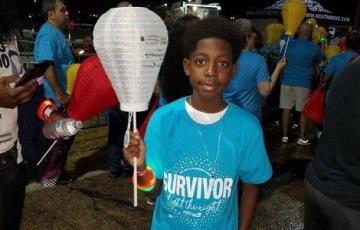
Kymani
In December 2017 only a couple days after his 10th birthday Kymani Davis was diagnosed with Non- Hodgkins Lymphoma with a mass on his chest. This was very heartbreaking for Kymani and his family as hearing the word "cancer" for your loved one is very terrifying. With the support and encouragement from his mom and family, Kymani remained hopeful. His faith in God was very important during this journey. He was treated at the Joe DiMaggio Children's Hospital. After two chemotherapy cycles, his lymph nodes were shrunken to half their sizes.
Hannah
As a busy college student, Hannah is focused on attending her business and art classes - a very different world than the cancer one she was a part of just a few short years ago. At 13 years old, Hannah was diagnosed with Burkitt lymphoma and went on to battle it successfully a second time.
Fertility
“Fertility” describes the ability to conceive a biological child. Human reproduction requires three elements: mature sperm, mature eggs and a person with a uterus to carry the pregnancy and give birth. Some cancers and some cancer treatments affect fertility.
Follow-Up Care
Click here for information about follow-up care, including what to expect, long-term and late effects of treatment, survivorship clinics, and other resources such as The National Comprehensive Cancer Network (NCCN) treatment guidelines.
Use the Survivorship Workbook to collect all the important information you need throughout diagnosis, treatment, follow-up care and long-term management of a blood cancer.
Follow-Up Care
Click here for information about follow-up care, including what to expect, long-term and late effects of treatment, survivorship clinics, and other resources such as The National Comprehensive Cancer Network (NCCN) treatment guidelines.
Use the Survivorship Workbook to collect all the important information you need throughout diagnosis, treatment, follow-up care and long-term management of a blood cancer.
Treatment Outcomes
In some people with PV, the disease remains stable for many years. In many people, life expectancy is the same as it would be if they did not have PV. With careful medical supervision and therapy, PV can usually be managed effectively for a long time. In some cases, however, it may progress to another type of blood disease, such as myelofibrosis or acute myeloid leukemia.
Treatment Outcomes
A few decades ago, there were very low cure rates in both children and adults diagnosed with ALL. Today, childhood ALL has one of the highest cure rates of all childhood cancers, approaching 92 percent for children younger than 15 years and more than 94 percent for children younger than 5 years.
Follow-Up Care
Click here for information about follow-up care, including what to expect, long-term and late effects of treatment, survivorship clinics, and other resources such as The National Comprehensive Cancer Network (NCCN) treatment guidelines.
Use the Survivorship Workbook to collect all the important information you need throughout diagnosis, treatment, follow-up care and long-term management of a blood cancer.
Splenectomy
The spleen is an organ on the left side of the body, near the stomach. CLL cells can collect in the spleen, causing it to become enlarged. Sometimes, the spleen becomes so large that it presses on nearby organs, causing pain. Also, an enlarged spleen may lower a person’s blood cell counts to dangerous levels. An operation to remove the spleen is called a splenectomy. Splenectomy is helpful for select patients. The operation may reduce pain and help improve blood counts.
Side Effects
The side effects of treatment for essential thrombocythemia (ET) will depend on many factors, including the type of treatment and dosage, the age of the patient and coexisting medical conditions.
Management of side effects is important. Patients should discuss any concerns about side effects with their doctor. Most side effects are temporary and resolve when treatment is completed
Disease- and Treatment-Related Pain
People with cancer can have pain caused by the cancer itself, its treatment, or both. They may also have pain caused by other health problems that are unrelated to cancer (like arthritis or diabetes).
Increased pain does not mean that the cancer is getting worse, but you should always tell your healthcare team if you have increased pain.
It’s important to remember that no matter what the cause, pain can be treated.
Other Disease Studies
Another type of study that blood cancer patients and their relatives can participate in is a nontherapeutic study. Nontherapeutic studies aren't considered clinical trials because they don't involve the study of new diagnostics or treatments for diseases. Instead, they're developed to gain a better understanding of disease-incidence patterns or the consequences of specific treatments for a specific disease.
In all cases, you should be asked to sign a consent form that defines the study's purpose and what's expected from the participants.
Lauren
To be healed by the miracles of modern medicine and prayer was the most profound experience of my life. It is difficult to articulate the gratitude my family and I feel in our hearts for the people who made it so. There is no scenario where I would be here today, writing this account, without the research made possible by The Leukemia & Lymphoma Society (LLS).
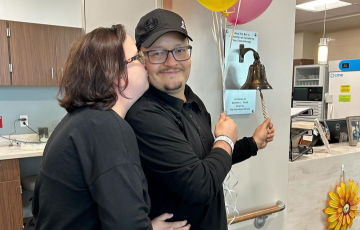
Andres
I want to start off by saying that my husband is amazing. My father passed away suddenly in September 2023, and my husband was my rock. He does/did everything he could to help me through my grief and still does. My husband had been complaining that he felt like something was stuck in his throat, but he would clear his throat, and it would go away. The week before Thanksgiving 2023, my husband was watching a funny video on YouTube and laughed so hard he couldn't catch his breath. He leaned forward trying to catch his breath but cut off his airway and collapsed face forward onto the floor.
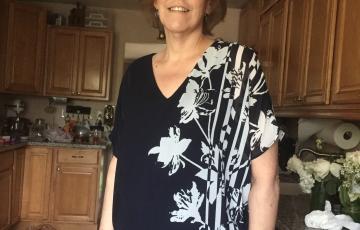
Donna
I was first diagnosed with non-Hodgkin lymphoma (NHL) in my 20’s. I had a three-year-old daughter and a husband. I went through six months of chemo and continued working full-time as a nurse in homecare the whole time. I was told that if I was to have a reoccurrence, it would come back as leukemia within 10 years. I harvested my bone marrow after chemo and saved it for the 10-year time frame. I thought I would never get cancer again. However, in 2018, I started not feeling well and was diagnosed in July with acute myeloid leukemia (AML).
Anna
I was a recipient of The Leukemia & Lymphoma Society’s (LLS) Scholarship for Blood Cancer Survivors this year. I was diagnosed with acute myeloid leukemia (AML) on December 23, 2014. I received over 80 doses of chemotherapy, 40 blood product transfusions, and had six infections. One of these infections landed me in the pediatric intensive care unit for seven days with acute respiratory failure and sepsis. I spent 133 days in-patient at the hospital. In May 2015, I left the hospital for good and am celebrating seven years in remission.
Lily
Hello, my name is Lily and I am 14 years old. In November of 2022, I was diagnosed with stage 3 Hodgkin lymphoma (HL). At the beginning, I was completely shocked because there was no sign that anything was wrong with my health. It was the hardest news I’ve ever heard in my life. The only thing that I was worried about was if I was going to die or if I was going to lose my hair I am now 2 cycles into my chemotherapy. I have lost my hair and I love my bald look! I finished my last chemo session on April 6th 2023.
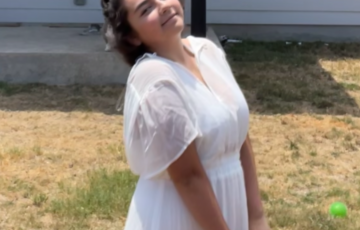
Alana
My name is Alana, and I’m 17 years old. Here is my story. On June 29, 2021, I was out having dinner with my family, and my smartwatch told me that my heart rate was really high. So, after we got done with dinner, we went to the ER. There they told me that they had found a mass in my chest and that I needed to be transferred to the children's hospital in Austin, Texas. They did some bloodwork, and then they noticed the swollen lymph node in my neck. That’s when they did the biopsy, and it was confirmed the next day that I had classic Hodgkin lymphoma (HL).
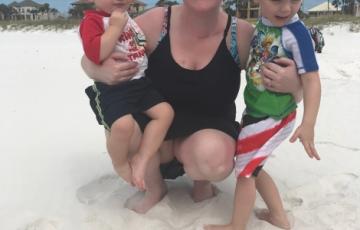
Callie
In January 2016, I was diagnosed with stage II Hodgkin lymphoma. I was four months pregnant at the time, and it was decided to carry to term because this type of blood cancer is a slower spreading cancer.
In May 2016, I had a healthy boy and 10 days later began my first of many chemo treatments. The following October I had my last treatment and I was excited to get back to "normal" life.
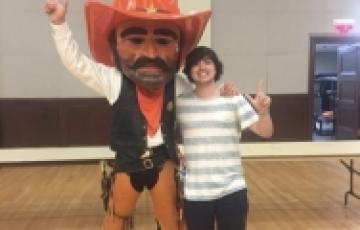
Camdon
My name is Camdon Cherry. I was 14 hours away from graduating with a BS in microbiology from Oklahoma State University when I was diagnosed with acute lymphblastic leukemia (ALL).
I presented to the hospital with staphylococcus infections in my blood and developed COVID-19 while in the hospital so my treatment was delayed for weeks. I am still very early in my treatments as I was only diagnosed on Dec. 1, 2020 and I am currently in induction phase 2 of chemotherapy.
Team In Training Participant
I joined Team In Training (TNT) in 2012, when I decided I wanted to train and run my first half marathon. Some of my friends had told me about their success with the program, and while I didn't have a personal connection to The Leukemia & Lymphoma (LLS), it was obviously a worthy cause and I felt I could handle the fundraising aspect.
I loved the experience; the training cycle, the coaches, the teammates, and even the fundraising. And they got me across that first finish line.
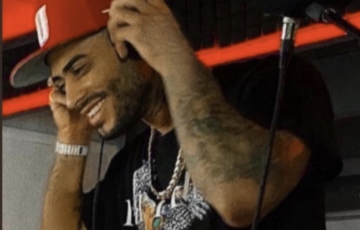
Jashon
I’m a musician from Missouri, now Tennessee named Jashon Hockaday (Jae Alxndr). I’ve been making music in the fore and background for a while now. My life changed when I was diagnosed with primary non-Hodgkin lymphoma (NHL) of the mandible.
As a new musician, my heart was broken as I couldn’t create the same. As time has progressed, I’ve turned more into an advocate looking to share awareness and help people like myself who didn’t have the infrastructure to give back.
Keyla
I was diagnosed with Hodgkin lymphoma (HL) three years ago at age 25. I started feeling pain in my neck when I drank alcohol, and then I started noticing my neck lymph nodes getting pretty big. After multiple blood tests, CT scans, and a biopsy of the neck, I was diagnosed with HL. I had to undergo 12 rounds of chemotherapy in total. I was so scared of all of the symptoms ― nausea and my hair falling out (but thankfully, my hair didn’t fully fall out, so I didn’t have to shave it, which was the least of my problems).
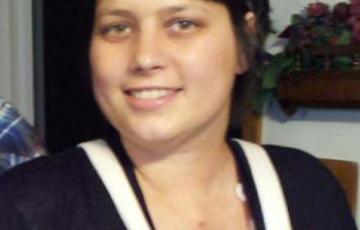
Jennifer
Jennifer has had a long journey with blood cancer but things are finally looking up. It started with a lump on her neck in 2009 that was diagnosed as Hodgkin lymphoma stage 2. Surgery, chemotherapy and radiation seemed to work. Then in 2011 a routine PET scan showed a spot on her chest. It was back. A stem cell transplant (using her own cells) got her through that time. But two years later, in 2013, another routine pet scan revealed another spot on her chest near her heart, and it was back for more surgery.